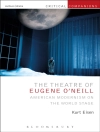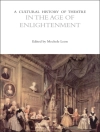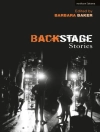Based on a research project funded by the Swedish Research Council, this book analyses 40 years of post-war independent immigrant filmmaking in Sweden. John Sundholm and Lars Gustaf Andersson consider the creativity that lies in the state of exile, offering analyses of over 50 rarely seen immigrant films that would otherwise remain invisible and unarchived. They shed light on the complex web of personal, economic and cultural circumstances around migrant filmmaking, and discuss associations that became important sites of self-organization for exiled filmmakers: The Independent Film Group, The Stockholm Film Workshop, Cineco, Kaleidoscope and Tensta Film Association.
Using an innovative combination of key film theory, The Cultural Practice of Immigrant Filmmaking studies immigrant filmmaking in a transnational context, exploring how immigrant filmmakers use film to find a place in a new cultural situation.
The e-book of this work is licensed under CC BY-NC-ND. To view a copy of the licence, visit https://creativecommons.org/licenses/by-nc-nd/4.0/
Open Access PDF of this title is available from OAPEN, at this link – The Cultural Practice of Immigrant Filmmaking.
Tabella dei contenuti
Introduction: The Cultural Practice of Immigrant Filmmaking
Film and Theory
Minor cinemas, the public sphere and the production of locality
Migration and diaspora: Notes on recent research
Outline of the book
Chapter 1: Migrants’ Minor Cinemas: Beyond Accented and Exilic Cinema
Accented cinema
Minor cinema
Beyond textual models of the accented and exilic
Chapter 2: Conditions of Production: Immigrant’s Associations and Workshops in Sweden
Immigration and culture in post-war Sweden
Establishing experimental film culture: The Independent Film Group
Immigrant film as cultural policy: The Stockholm Film Workshop
The momentary agency: Cineco (Cinecooperativo)
To be or not to be a filmmaker: Kaledioscope
Do it yourself: The Tensta Film Association
The production of film, the production of experience and the public
Chapter 3: From Avant-garde to Communion: Ten Films by Immigrant Filmmakers in Sweden
Fabulations in the minor key
Study 1 (Awakening) by Peter Weiss (1952)
Alone by the Tensta Film Association (1974)
Do You Want to Join Me, Martha? by the Tensta Film Association (1980)
Interference by Maureen Paley (1977)
The Earthman by Muammer Özer (1980)
The Mirage by Guillermo Álvarez/Cineco (1981)
The Sea is Far Away by Reza Bagher (1983)
The Promise by Menelaos Carayannis (1984)
The Waiting by Myriam Braniff (1989)
Five Minutes for the Souls of America by César Galindo (1992)
Projecting a public, creating a context
Chapter 4: The Cultural Practice of Minor Immigrant Cinema Archiving
The archival life of cinema
The archival trajectories of the immigrant films
The Stockholm Film Workshop and immigrant filmmaking
Performing accidental archives
Dispostif in the making, palimpsests of minor histories and the politics of recognition
Conclusion: Immigrant Filmmaking as Minor Cinema Practice
Circa l’autore
Prof. David E. James is on the faculty of the School of Cinematic Arts at the University of Southern California. His teaching focuses on avant-garde cinema, culture in Los Angeles, east-Asian cinema, cinema and music and working-class culture. His publications include Allegories of Cinema: American Film in the Sixties (1989), Power Misses: Essays Across (Un)Popular Culture (1996), The Most Typical Avant-Garde: History and Geography of Minor Cinemas in Los Angeles (2005) and Rock ‘N’ Film: Cinema’s Dance With Popular Music (2016).












